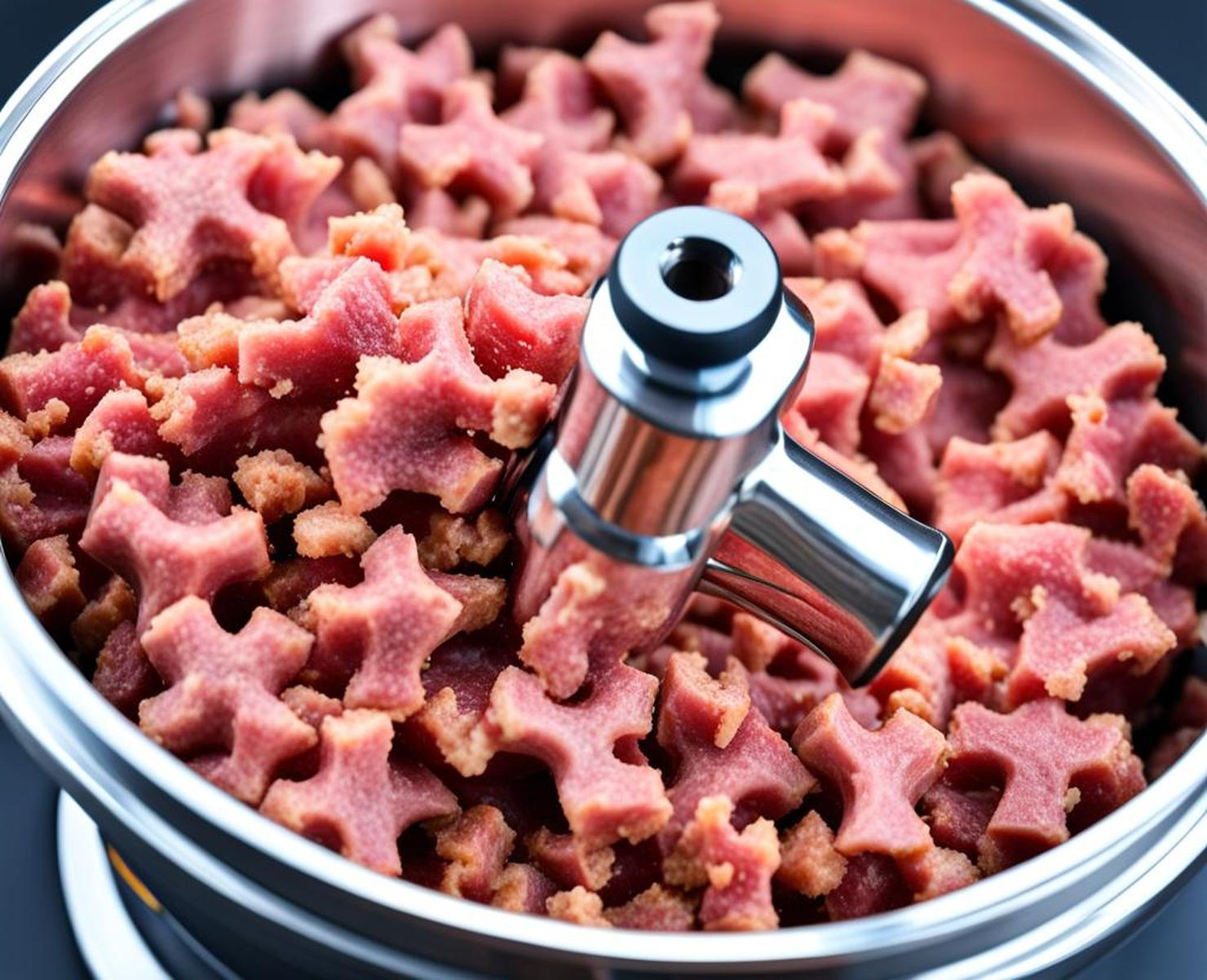Grinding meat and bones at home can be rewarding in many ways. You have control over the type and cut of meat used, as well as what goes into making delicious sausages, broths, and other recipes. However, processing bones requires a heavy-duty meat grinder that can handle the extra workload.
Types of Meat and Bone Grinders
Meat and bone grinders come in electric and manual varieties. Electric grinders offer more power and automation, while manual ones provide greater control.
Electric Meat and Bone Grinders
Electric meat grinders use an electric motor to operate the grinding mechanism. This makes processing large batches of meat and bones efficient and hands-free. Most electric models come with a reverse function to prevent clogging when grinding tough materials like bones. Benefits of electric meat and bone grinders include:
- More torque and horsepower to handle bones
- Larger capacity for big batches
- Automated operation with built-in reverse
High-powered electric grinders with at least 0.75HP motors and metal gears are best for frequent bone grinding tasks.
Manual Meat and Bone Grinders
Manual meat grinders use a crank handle that the user rotates to operate the grinding plates and blades. While requiring more physical effort on your part, manual grinders give you greater control over the consistency and texture of the ground meat and bones. Other reasons to consider a manual meat grinder include:
- Better control and precision
- Don’t rely on electricity
- Lower cost of entry
Choose a sturdy cast iron or stainless steel manual grinder with quality grinding head components for dealing with bones.
Key Features to Handle Bones
Specialized meat grinders for bones have features tailored to process hard materials effectively.
Motor Power
A grinder needs ample motor power and torque to crush bone pieces and push the material through effectively. Electric grinding motors are measured by:

- Horsepower (HP)
- Wattage
Commercial meat grinders use motors with up to 5HP, while suitable home models have 1HP+ motors. Power below 0.75HP may struggle with bones.
Grinding Head and Auger
The grinding head encases the auger and blade/plate assembly. An angled opening assists feeding bones into the auger screw, which helps pull and direct them into the cutting mechanism. Well-designed heads and augers prevent clogging when grinding bones.
Grinding Plates and Blades
Sharp stainless steel blades mounted behind the grinding plate do the cutting work, while the plates have holes that determine coarseness. Interchangeable plates allow customizing particle size. Special bone grinding blades help make short work of tough materials.
Grinder Material and Durability
The most durable meat and bone grinder materials include:
Stainless Steel Grinders
Stainless steel resists corrosion and maintains a smooth grinding surface. Common grades like 304 and 316 stand up well to bone grinding wear and tear while allowing easy sterilization.
Carbon Steel Grinders
Carbon steel grinders are very strong and affordable but require extra care and maintenance to prevent discoloration or rusting from bone dust and residue exposure.
Cast Iron Grinders
Cast iron grinders distribute grinding force evenly and maintain stability under load. However, cast iron is brittle and may eventually crack if subjected to continued pounding from dense bones over time.
Grinder Capacity Considerations
When bones are in the mix, having ample room in key grinder areas prevents jamming or clogging.
Feed Tube Size
A wider mouth grind tube allows you to insert odd-shaped bone pieces. Commercial grinders have large hoppers to handle whole cuts of meat and game.
Hopper Size
A spacious hopper portion-controlled chunks of meat and bone so they properly enter the auger screw housing. This saves you time hand-feeding small batches into the grinder.
Motor Heat Production
High-powered motors generate significant heat under load. Grinders meant for continuous bone grinding have cooling mechanisms and thermal overload protection.
Cleaning and Maintenance
Thorough cleaning after grinding meat and bones prevents residue buildup and bacteria growth:
- Fully disassemble all removable grinder parts
- Remove all traces of matter lodged inside
- Sanitize and hand dry components
- Lubricate motors and moving parts
Grinding bones calls for a special class of meat grinder featuring robust stainless steel components, high motor power, and design tweaks to handle hard, odd-shaped material. While electric grinders offer brute force and automation, manual options provide greater precision. Carefully weigh commercial versus home needs regarding capacity, feed opening width, maintenance demands, and cleaning protocols. With the right grinder, you’ll enjoy the benefits of processing meat and bones yourself for years to come.
When selecting a meat and bone grinder, it’s crucial to consider the motor power. Bones are harder than regular meat, and the grinder needs sufficient power to break them down. A motor power of at least 1500 watts is recommended for bones.
The more attachments a meat and bone grinder comes with, the more versatile it is. Look for attachments that can handle different sizes and types of meat and bones, such as coarse, medium, and fine grinding plates.
The blades should be made of high-quality stainless steel and be sharp enough to handle bones. Some grinders come with special bone-crushing blades that can handle larger bones.
A meat and bone grinder should be easy to use, especially when dealing with bones. Look for features such as a reversible motor that can help prevent clogging and jamming. Also, consider the size of the feed tube and whether it can accommodate larger bones.
Cleaning a meat and bone grinder can be a messy task, but some models come with dishwasher safe parts or brushes to simplify the process. It’s also important that the grinder is easy to fully disassemble.
